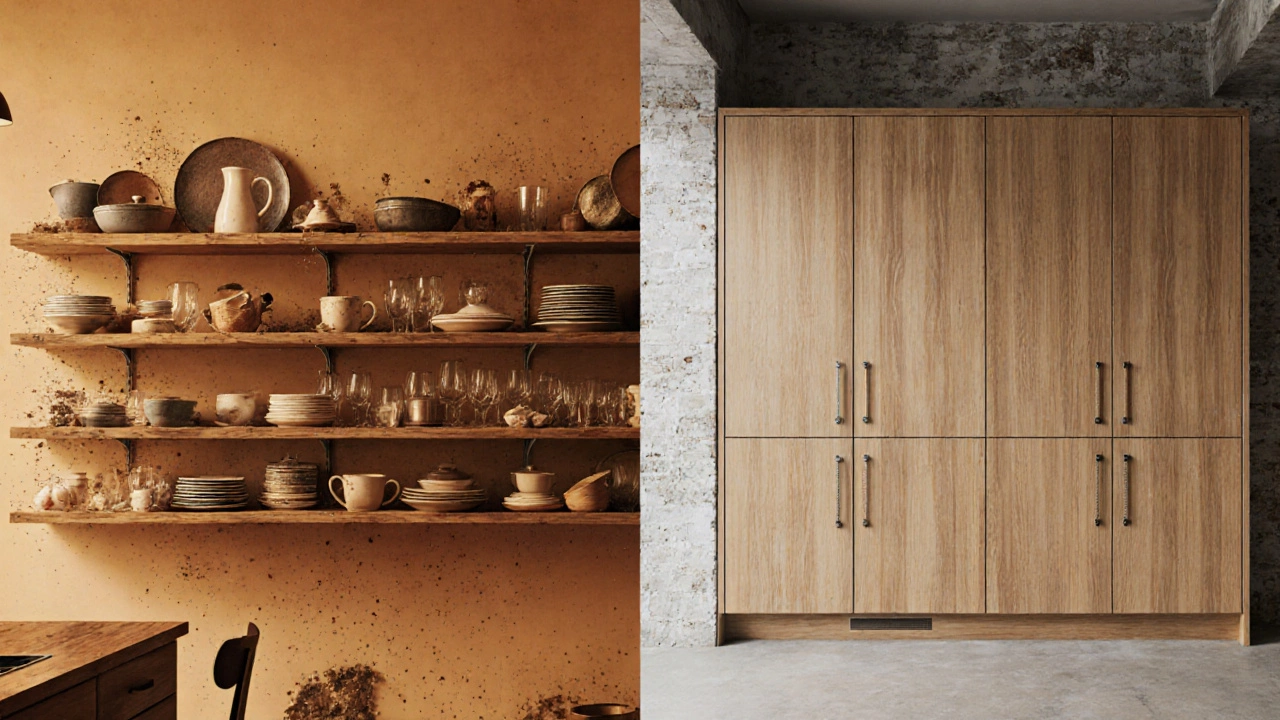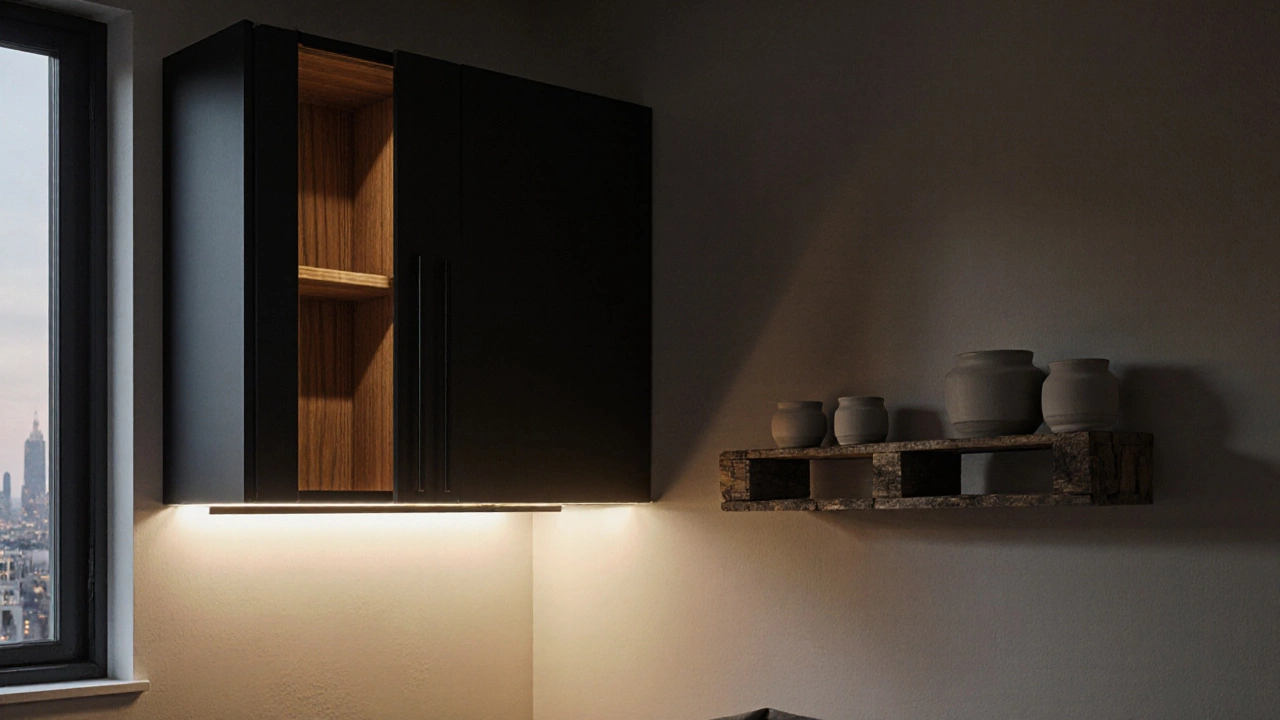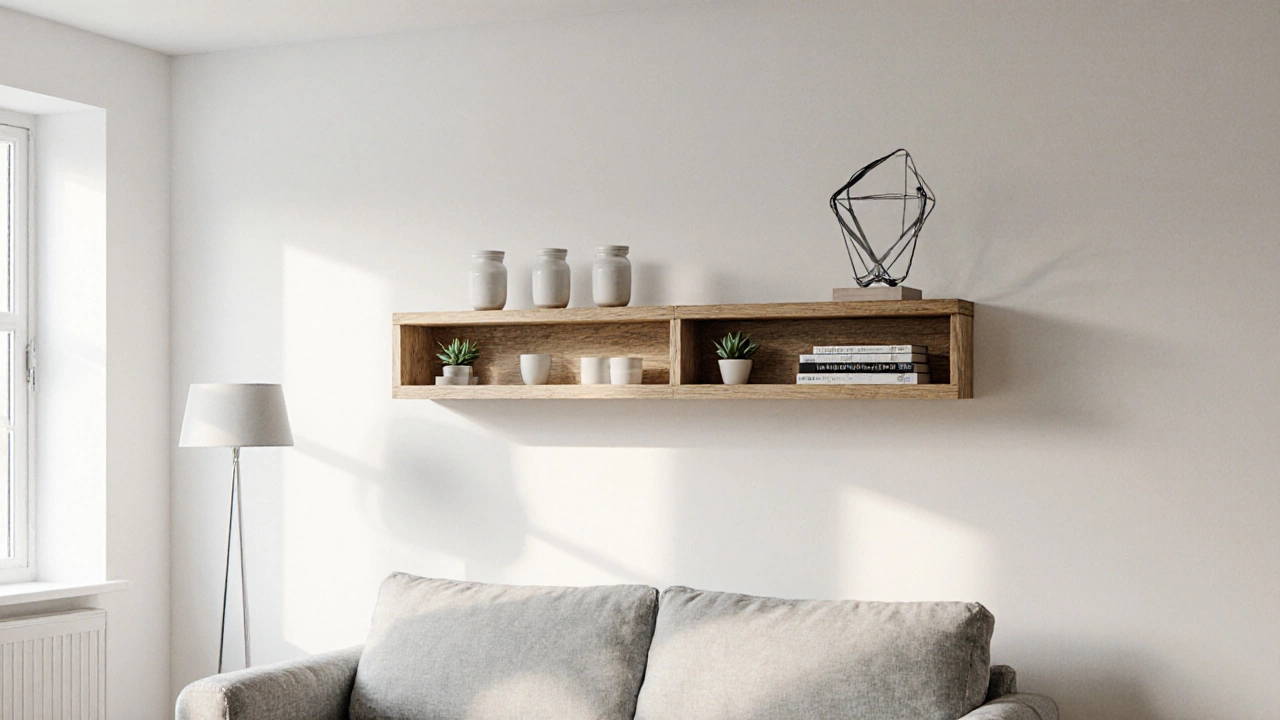Open Shelving Suitability Calculator
This tool helps determine if open shelving is suitable for your space based on your lifestyle and design needs. Answer the questions below to receive a personalized recommendation.
Answer the questions above to see your result.
When it comes to modern interiors, Open Shelving is a wall‑mounted storage solution that displays items rather than hides them. It has been a staple of minimalist and Scandinavian interiors for the past decade, but designers and shoppers are now asking: is it losing its appeal?
What Exactly Is Open Shelving?
Open shelving consists of floating or bracket‑supported boards fixed directly to a wall. Unlike cabinets, there are no doors, hinges, or visible hardware that conceal the contents. The look is clean, airy, and encourages owners to curate what they display.
Key attributes:
- Material: typically wood, metal, or glass.
- Installation: wall‑mounted, requiring studs or strong anchors.
- Depth: usually 8‑12 inches, enough for books, dishes, or decorative objects.
Why Open Shelving Became a Design Darling
Since the early 2010s, several forces pushed open shelving into the spotlight:
- Minimalist Design championed uncluttered surfaces.
- Scandinavian Style celebrated light wood tones and openness.
- Social media platforms-especially Instagram and Pinterest-showed curated shelf looks that went viral.
- Consumers sought affordable ways to upgrade interiors without costly built‑ins.
Signals That the Trend May Be Fading
Design magazines such as Elle Decor (July 2025 issue) and industry reports from the Home Furnishings Association note a subtle pivot. Here are the most cited indicators:
- Sales data: Retailers report a 12% drop in open‑shelf kits compared with a 9% rise in closed cabinet modules in Q2‑2025.
- Search trends: Google’s keyword index shows "open shelving ideas" peaked in 2022 and has slipped 18% year‑over‑year.
- Designer surveys: 63% of interior architects say clients now ask for "hidden storage" to keep work‑from‑home spaces tidy.
These numbers suggest a growing appetite for storage that blends aesthetics with concealment.

Factors Driving the Shift
Three main forces are reshaping how people think about wall storage:
- Clutter fatigue - After years of showcasing every prized object, many homeowners feel overwhelmed and want surfaces that stay clear.
- Sustainability concerns - Closed cabinets made from reclaimed wood or bamboo are marketed as eco‑friendly, while open shelving often ends up as a discarded trend.
- Multi‑functional living - Small apartments now need furniture that doubles as storage, workstations, or room dividers, reducing the appeal of purely decorative shelves.
What’s Replacing Open Shelving?
Designers aren’t ditching wall storage; they’re swapping the visual language. Below is a snapshot of the most popular alternatives:
| Aspect | Open Shelving | Closed Cabinets |
|---|---|---|
| Visual Weight | Light, airy | Heavier, solid |
| Ease of Installation | Simple brackets | Requires cabinetry framing |
| Concealment | None | Full coverage |
| Customization | Mix‑and‑match lengths | Modular door styles |
| Maintenance | Dust‑prone | Door hinges need occasional lubrication |
| Cost (average UK market) | £80-£200 per unit | £200-£500 per unit |
Other rising concepts include Floating Cabinets with hidden handles, Glass‑front Shelves that offer a glimpse without full exposure, and built‑in Multi‑functional Furniture that incorporates storage behind seats or tables.
How to Keep Open Shelving Fresh
If you still love the open‑shelf look, here are five practical tweaks that keep it from feeling dated:
- Mix materials: Combine reclaimed wood with matte black metal brackets for an Industrial Style vibe.
- Introduce selective concealment: Add slim, sliding panels or glass doors that can be closed when needed.
- Curate with purpose: Limit displayed items to 5-7 per shelf and use uniform containers (e.g., ceramic jars) to impose order.
- Use sustainable materials: Opt for bamboo or FSC‑certified wood to address eco‑concerns.
- Integrate lighting: LED strips underneath create visual depth and distract from any clutter.

Looking Ahead: 2025‑2026 Forecast
Trend‑watch firms predict that open shelving will settle into a niche rather than dominate mainstream interiors. Expect to see it used primarily in:
- Showcase zones - like coffee‑table displays or boutique retail windows.
- Open‑plan offices where quick access to reference books or décor is needed.
- Eco‑focused homes that pair open wood shelves with reclaimed‑material cabinets.
Meanwhile, the broader Home Decor market will lean more toward hidden storage solutions that balance aesthetics with practicality.
Quick Checklist: Decide If Open Shelving Fits Your Space
- Do you enjoy regularly rearranging displayed items? → Yes = Keep open shelves.
- Is your household prone to clutter or pets that shed? → No = Consider closed cabinets.
- Are you aiming for a sustainable interior? → Choose reclaimed wood or bamboo shelves.
- Do you need extra surface area for work‑from‑home? → Opt for floating cabinets with integrated desk space.
By answering these questions, you can decide whether to embrace the evolving trend or transition to a more concealed solution.
In short, the answer isn’t a simple "yes" or "no" - it’s about context, lifestyle, and the desire for a balanced look. open shelving isn’t dead; it’s just becoming more selective.
Frequently Asked Questions
Will open shelving look outdated in a few years?
Design cycles run in 5‑7 year waves. Open shelving peaked around 2018‑2022. By 2028 it will likely be viewed as a niche, not a universal default. Updating the material or adding subtle concealment can keep it fresh.
Is open shelving practical for kitchens?
It works well for displaying dishes, glassware, or decorative jars, but you’ll need to keep surfaces clean. For items you don’t want on show, combine it with a few closed cabinet units.
What are the safest mounting methods?
Always anchor brackets into wall studs or use heavy‑duty toggle bolts for plaster. For heavier loads (over 20 kg), consider a French cleat system to distribute weight.
Can open shelving work in small apartments?
Yes, if you keep the depth shallow (8‑10 in) and use the shelves to visually lift the ceiling. Pair them with light‑colored walls for a spacious feel.
What sustainable materials are best for open shelves?
Bamboo, FSC‑certified hardwood, and reclaimed pallet wood are popular choices. They offer durability and a lower carbon footprint than new pine.
How do I keep dust off open shelves?
Use micro‑fiber cloths weekly and consider an air‑purifier in the room. Glass or lacquered finishes shed dust more easily than raw wood.

